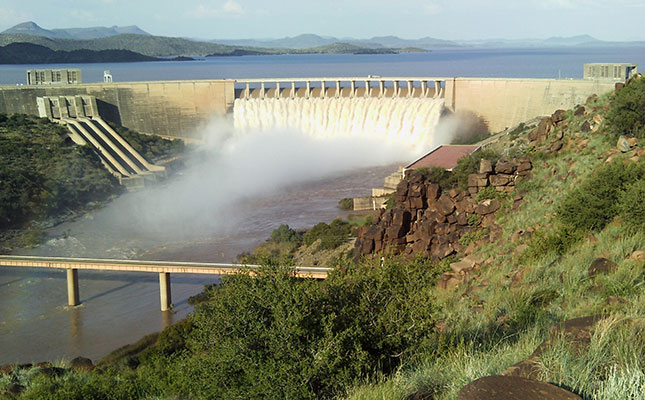
Photo: Petrus Vermaak
With the level of the Kouga Dam now at below 7%, the Gamtoos Irrigation Board (GIB) has warned water users in the region that it cannot supply water adequately below the 3% water mark.
Known for its citrus, cash crop, and dairy farming, the Gamtoos River Valley in the Eastern Cape is suffering the effects of a prolonged drought, and the 132 agricultural water users who rely on the dam for irrigation have been able to draw just 20% of their annual water quota since last July.
Rienette Colesky, CEO of the GIB, said in a statement that the Nelson Mandela Bay and Kouga municipalities had also been restricted to drawing just 30% and 70% of their full water allocations, respectively.
“The situation endangers the citrus harvest for many farmers who might not be able to water their crops further, and who do not have access to alternative sources, such as boreholes.”
Even when farmers supplemented their water supply by drilling boreholes, that water quality was not always suitable for agricultural use, she added.
“The situation was already dire for our cash crop and dairy farmers from the start of the water year, as a 20% availability of their full water allocations has had a devastating effect on the planting of cash crops and the watering of pastures for dairy farming.”
Many farmers have had to outsource the planting of their crops and grazing of their cattle to areas where water was more plentiful, she said.
Cattle and citrus farmer in the valley, Tertius Meyer, said in the statement that some farmers had already used up their water allocations for the 2020/2021 water year, which ends in June, which had resulted in their supply from the dam being discontinued.
“Some farmers are helping their neighbours [with water]. Some are spending a fortune bringing in water in tankers just to keep their orchards alive,” said Meyer, who is also chairperson of the GIB.
A fellow farmer in the valley, Khaya Katoo, was quoted in the statement as saying that he had to drill boreholes to supplement his water supply from the dam.
“Our quota will be used up very soon, but we have fruit which needs harvesting. That’s a worry, as it’s hot and the trees need a lot of water.
“We have reduced our irrigation scheduling to ensure that the youngest trees get enough water and survive,” said Katoo.










